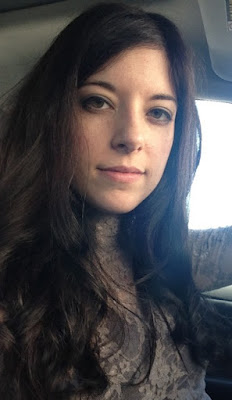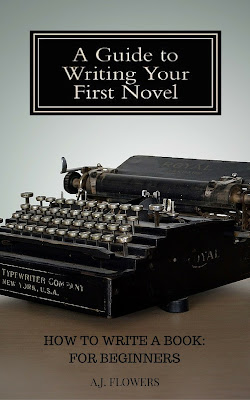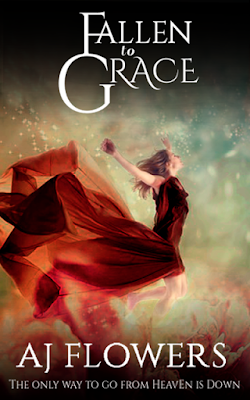It’s another new month, which means another fun guest! Today we get to meet A.J. Flowers!
A.J. Flowers is a fantasy author, book blogger, and automotive engineer in Detroit. She loves her writing, her work, and above all, her faith and family. When not writing or designing, you can find her saving the world from annihilation on her favorite video games side-by-side with her Dutch husband and princess Blue Russian kitty named Mina. You can follow her writing advice, published work, and fun personal stories on her blog.
In order to market my book, I used my e-mail subscription list as the main jump-off point. I currently have over 500 subscribers which were hard-earned by posting insightful and useful information on my blog at least once a week for a year.
I released the book as free for a week to get the ball rolling, and I was shocked when I moved 1,000 units. Since the release, I’ve continued to have solid sales in both ebooks and paperback, as well as consistent pages read on people who have a Kindle Unlimited subscription. Aside from a few days of Facebook advertising, which got me only enough sales to pay for the advertisement, my email subscription fan-base was really where I had success in marketing. These are people who already liked what I have to say based on my blog, and would encourage their friends to read my work. I can’t reinforce enough how important it is to have a platform with dedicated readers. Those are the people who will make or break you when you’re first starting out.
When I have more books released, especially my fantasy novels, I plan on using the funds raised by my writing guide to finance Goodreads and Amazon giveaways. Unfortunately, I have to purchase my own books to give them away, and after fees and shipping, royalties only give back a small percentage. I know the key to success is word of mouth. The more people who have your book on their “to-read” list means more exposure, and the likelihood that their Goodreads friends will see your book through their friends and be encouraged to try it out as well.
A: I can’t say I ever get what people refer to as writer’s block. But I do get something similar, which is writing tangents. One of my strengths is I never have a shortage ideas, so I don’t get writer’s block. But the flip-side of that is there are too many directions my story can go. I start to write on a tangent or include too many things at once, and I really have to either force myself to have tunnel vision and ignore my other sprouting ideas, or make a strict outline. I’ve had much better luck trimming down the excessive amount of revision I’ve had to do when I forced myself on a strict outline. Everyone works differently, so if you suffer from writer’s block, I recommend just asking yourself “What does the main character want?” and create an obstacle to that goal. You’ll then create a scene where your main character must overcome this obstacle to achieve their goal, thus following a main drive for all storytelling.
A: I think authors get too sensitive about reviews. But it’s not about what the review really says, rather that it is honest and how many reviews you can get. If a review is just gushing, it won’t seem realistic and some might believe it’s from a family member or friend. If a review is downright terrible, you either deserved it or the poster ate yellow snow before reviewing your book. Either way, in no circumstance should an author ever respond to reviews, and I’d recommend not even reading them if you can’t handle it. The reviews aren’t for you. They’re for other readers to judge if this would be a book they’re interested in. But aside from that, having more reviews is a good thing, and will open up chances to be placed higher in search results and give your book credibility. So really, there’s no such thing as a bad review.
- Self-Publishing super fast (you can publish the instant you feel your book is ready). Whereas Traditional publishing can take years. It can easily take 1-2 years just to find an agent or publisher by submissions and querying. If you have an agent, it may take them a year to sell your book, or they might not sell it at all. And then the publisher can take an additional year for everything they need to do in order to actually publish a book.
- It’s more profitable to Self-Publish. Amazon KDP offers 70% royalties and Traditional Publication is usually around 30%.
- When Self-Publishing, you have full control over new editions, giveaways, price, cover… EVERYTHING! You have little to no say over these things when going through the traditional route. Depending on your contract, some publishers may even be able to make changes to your book without your permission!
- With great power comes great responsibility. If you mess up when Self-Publishing, it’s all on you.
- When Self-Publishing, you may be tempted to release the book before it’s the best product it can possibly be. If you have editors, they’ll make sure the book isn’t released before it’s ready.
- If Self-Publishing, you may not be able to afford what your book deserves such as a content editor ($6,000), a copywriter ($600), a book cover without using stock photos ($1,000).
- If Self-Publishing and you go with PoD (Print on Demand) then you may have difficulty getting your book into physical bookstores. Bookstores don’t like to purchase books which can’t be returned. But with a Traditional Publisher you not only won’t have to worry about that, but usually the publishing has an exclusive catalogue they send out to bookstores and your book will be on it! That’s a marketing benefit that self-publishing can’t offer.
- While Self-Publishing is more profitable per sale, Traditional Publishing does have the perk of an advance on royalties. Even if you don’t make enough sales to cover your advance, you get to keep it.




Good interview! I would add the caveat that self-publishing might not necessarily cost thousands of dollars–it all depends on how you approach it. Releasing the best product possible is definitely important, regardless, though!